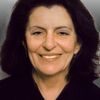The idea for Alex Gibney's new film Magic Trip began at Sundance and climaxes with a world premiere at the film festival this weekend.
En route to Sundance to show Enron: The Smartest Guys in the Room (2005), Gibney and editor Alison Ellwood, found a New Yorker article by Robert Stone that piqued their interest: Ken Kesey, the celebrated author of One Flew Over the Cuckoo's Nest who died in 2001, left behind an unfinished film. They quickly acquired the rights, and found that completing Kesey's vision was its own arduous trip. Said Gibney in a recent interview: "Showing this at Sundance is coming home again."
Magic Trip poses a question: When did the '60's start? Everyone thinks it was all tie dye and flowers but really it was Donna Reed shirtwaists and winged gas-guzzlers in suburban driveways, idyllic America from the decade before. That is, until everything changed in 1963, the year of conflicting images: the Kennedy assassination and the coming World's Fair, catalyst for Ken Kesey and his Merry Pranksters' 1964 LSD fueled road trip in a hand painted school bus dubbed Further.
Yes, the Pranksters and their iconic Further were famously immortalized in Tom Wolfe's Electric Kool Aid Acid Test, but less known are the 40 hours of 16mm footage the prankster's took consciously following an unscripted script that featured themselves as characters: Kesey was Swashbuckler, Ken Babbs was Intrepid Traveler, George Walker was Hardly Visible, Steve Lambrecht was Zonker, and others. The women were bold, one pregnant: Gretchen Fetchin, Stark Naked. Trucks refused to pass when she perched panty-clad on the bus's rear.
The driver Neal Cassady was Speed Limit. But in this movie the beat icon shakes off the myths about him, seeming paternal. Gibney points out, taking a fatherly precaution, Cassady checks Further's tires before taking the trip west. The footage of Neal Cassady is particularly rare, emphasizing his tragedy: after On the Road, he was cast into a role he was not prepared to play. And, glimpsed at a party in New York, slumped in a chair, the writer Jack Kerouac seems out of it, definitely on his down journey.
Finding this footage badly damaged, cut up and scratched, and inexpert to say the least, Gibney, with the help of the History Channel and Martin Scorsese's film preservation foundation, worked his own magic transforming the material, restoring audio and visuals, even hiring a lip reader to help sync sound to make "an immersion experience" of that remarkable trip. "We were like archaeologists working carefully and delicately," he said.
A high moment (pun intended) is a fully realized acid trip. Said Gibney: "We did not want a stylized LSD trip, or a cartoon. We wanted to come out of the material that was there." Research into Kesey's romance with LSD revealed the irony the great counter culture drug originated in experiments by the CIA, not to liberate, but to enslave, to be used for interrogation, even torture.
Guided by those who were there, Gibney began with conventional interviews: "but they seemed like a film we had already seen extolling 'the halcyon days of yesteryear.'" Then his team found transcripts of audiotapes John Teton made with the Pranksters and put those together with film. The effect is kaleidoscopic, voices at times difficult to identify over pictures reflect the larger Prankster mindset.
"The Pranksters had a saying, 'You're either on the bus or off the bus.' We decided to make a film to give the feeling of being on the bus literally and figuratively."
Said Gibney of his choices: "The big break for us was another Kesey book, The Further Inquiry. He wrote it like a live court case and screenplay for what they wanted to make:
"The pranksters had a vision of the film but I don't think they ever realized it. As filmmakers they were wildly enthusiastic and captured great images. But there were huge technical problems: being good farm boys they bought the best equipment, the best cameras, recorders. They didn't think they needed to hire a cameraman. In some of the footage, a soundman is seen with wires in his mouth. They were running the audiotapes off the generator on the bus and so they ran tape recordings at wildly different speeds. Alison Ellwood who co-directed and edited with me went through all the footage. She never found a sync point."
As to the music: "We heard some songs on the recordings and found better recordings. We used their vibe to guide us. We included John Coltrane tunes and used his son Ravi, done in the spirit of Coltrane.
We used music of 1964 or before, "The Wanderer," for example. Once they get back from the trip we use Dead music-they were then known as "The Warlocks," that's The Dead before they were The Dead-- then later, "Truckin," later Dead.
Magic Trip is an event. While the trend for filmmakers tackling the challenge of mid-twentieth century culture is to create fiction-i.e., the recent movie Howl, the upcoming On the Road, good as these works may be, they are representations. This, said Gibney, "is the real deal," not a documentary per se, "I call it archival cinema verite."
Sundance, prepare to be dazzled
This post also appears on Gossip Central.
